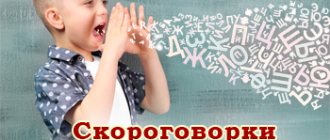Imagination is the process of creating new images of the future, based on previous experiences and creative thinking. It plays an important role in creating images that were not accepted by a person in reality, influences the strength of emotions and feelings, and is an important factor in the development of human personality.
“ “Imagination is a necessary and integral moment of thinking, since thinking always includes the processes of forecasting and anticipation.” L.S. Vygotsky
It tends to develop under the influence of broadening one’s horizons, accumulating experience, images and information. Attention has been paid to the development of imagination since childhood; many children's games and exercises in preschool and secondary educational institutions are aimed at it.
Another property of imagination is that it is not constant, periods of decline alternate with rises, so-called inspiration, but it has been scientifically proven that inspiration and fresh ideas often come to us precisely in the process of work, after a certain amount of effort.
Classifications
By degree of activity:
- Active (stimulates the implementation of created images, activates creative activity, sometimes requires great effort if the creation of images is necessary for work, for example, like writers, screenwriters, decorators).
- Passive (does not encourage a person to take active action, but only generates images in his mind with which he is satisfied without realizing them, or they are, in principle, not realizable).
By type:
- Productive (creates new elements, so-called fantasy products, something that did not previously exist).
- Reproductive (imagination based on existing phenomena and objects).
- Dreams (the process of imagination aimed at the real future).
- Hallucinations (images created by altered consciousness).
- Dreams.
In connection with past experience:
- Recreating (imagination that is based on experience).
- Creative (creating new images with minimal reliance on experience)
The concept of imagination, its types, functions, mechanisms, physiological basis
The process of imagination is expressed in the fact that a person creates something new - thoughts and images, on the basis of which new actions and objects are created. This is the creation of something that did not yet exist in reality.
The images with which a person operates include not only perceived processes and phenomena. These can be events, facts, phenomena, witnesses that a person has not experienced and could not experience. Images of the imagination may contain inevitable, desired, possible events and phenomena. And at the same time, something new, created in the imagination, is always connected with what really exists. Images of the imagination are based on memory representations, but are subject to transformation in the imagination. According to R.S. Nemova, imagination is the ability to imagine an absent or unreal object, hold it in consciousness and mentally manipulate it.
Imagination is associated with all aspects of human activity, with memory, perception, thinking. Thus, the perception of a picture becomes more meaningful, more emotional, when it includes imagination.
Types of imagination vary depending on the degree of activity and consciousness of a person to create new images. Depending on this, a distinction is made between involuntary (passive) and voluntary (active) imagination. In the involuntary imagination, new images are created under the influence of unconscious needs, aspirations, and attitudes. Such imagination works when a person is asleep, in a sleepy state, in a thoughtful state, etc.
Voluntary imagination is the process of consciously constructing images in connection with the goal pursued by a particular type of activity. Voluntary (active) imagination arises at an early age; it is most developed in children's play. In role-playing games, children take on different roles; during the game, active imagination is required, since it is necessary to correctly structure their behavior in accordance with the intended role. In addition, you need to imagine the missing objects and the plot of the game.
Free imagination is divided into recreated and creative. Recreation is characterized by the fact that in its process new images subjectively arise, new to the individual, and objectively already exist, embodied in certain cultural objects. The essence of the reconstructed imagination is that a person reproduces, reproduces what he did not perceive, but what other people convey to him through language, drawings, diagrams, signs, and so on.
There must be a connection between images and ordinary symbols, as well as decoding signals, symbols and signs.
So, reconstructive imagination is the creation of a new image based on verbal descriptions, the perception of images in the form of pictures, diagrams, maps, drawings, mental and material models.
Creative imagination plays an important role in human life. It allows you to exchange experiences, helps each person to master the experiences and achievements of other people.
Creative imagination is the independent creation of new images that are transformed into original products of activity. This is the creation of an original image without relying on a ready-made description or a conventional image. Such imagination plays an important role in all types of creative activity of people.
A special form of imagination is a dream. A dream is always aimed at the future, at the prospects of human life. The images that a person creates in a dream are characterized by a bright, lively, concrete character and emotional richness. But sleep is useful only if it daily connects the desired future with the present; if not, then the dream can turn from a stimulus to action into a vicarious action and turn into a fantasy.
The neurophysiological basis of imagination is the formation of temporary neural connections in the area of the first and second signaling systems, their dissociation (decay into individual elements) and unification into new systems under the influence of various motives. Imagination is associated with emotions and the activity of subcortical formations of the brain, but recent research confirms that the physiological mechanisms of imagination are located not only in the cerebral cortex, but also in deeper parts of the brain - in the hypothalamolimbic system.
The basis of imagination is always perception, that is, the material from which new material is built. This material is then processed—combined and recombined. Analysis and synthesis of what is perceived are components of this process.
All further activity of the imagination occurs through the following mechanisms: agglutination, accentuation, hyperbolization, schematization, typification, reconstruction. Let's look at them in detail.
Agglutination is the merging of elements or parts of several objects into a bizarre image.
Emphasis is emphasizing and emphasizing certain features of objects so that one part can dominate. Hyperbole is an exaggeration or understatement of an object or its parts.
Reconstruction is the creation of a whole image from parts of an object.
Schematization - Smoothing out differences and similarities between objects.
Typing is the distinctive characteristics of different objects in an image.
The human imagination is multifunctional. Among the most important:
- Gnostic-heuristics - allows the imagination to find the most essential, significant aspects of reality and express them in images;
- protective - allows you to regulate your emotional state (satisfy needs, relieve tension, etc.).
- Communication-investment - involves communication either in the process of creating an imaginary product, or in the process of evaluating the result;
- The prediction is that the product of imagination is the goal towards which the subject strives.
Techniques of creative imagination
- Agglutination (creating a new image from two or more existing ones, for example, the fabulous “Hut on Chicken Legs” appeared as a combination of “hut” and “chicken”).
- Analogy (the image is built on the basis of an existing one, but with exaggerated or understated characteristics, for example, epic heroes who had fabulous strength and could fight the enemy one on one).
- Typification (a single image of a typical, existing image, for example, a painting by landscape artists).
- Association (creation of a holistic image based on small units of already existing images).
- Personification (creating an animate image based on inanimate elements. Most often used in myths and fairy tales).
Creative imagination can be scientific, artistic, technological - in a word, it can be used in almost all spheres of human life. It is important to distinguish between creative imagination and dreams, since it belongs to the active type and is further aimed at realizing the created images, while dreams are a passive type, they may not motivate a person to action.
TRIZ “Goldfish” method
The main task is to take an unrealistic situation as a basis and gradually “dissect” it until the moment of solution, gradually cutting off all the real components.
For example: paleontologists found a dinosaur egg during excavations. Conditions underground were such that the egg did not petrify, but the embryo fell into a state of suspended animation. And now, once on the surface of the earth, warmed by the sun, the egg woke up, and movements were heard inside. Suddenly the shell burst, and scientists saw the head of a baby - a four-winged microraptor.
So, let's start the analysis using elements of TRIZ technology.
— Paleontologists at excavations - the situation is quite real.
“Founding a dinosaur egg is also quite acceptable.”
- The egg did not petrify, but the embryo fell into a state of suspended animation - this is where the fantastic component begins, which we again dismember and remove all reality.
Using this method, you can create entire TRIZ projects in kindergarten. Take stories from various areas of human life, nature, science and prove to yourself and others that the impossible is possible. The only thing you shouldn’t do using this method is disassemble existing fairy tales. This can negatively affect the educational component of the fairy tale and its perception as a whole.
Methods for developing creative imagination
There are many specific exercises for developing creative imagination, but it is worth noting that the main factor is the accumulation and expansion of experience - scientific, creative, technical. The more information and images there are in a person’s mind, the more actively his imagination will work, relying on them, synthesizing and giving birth to new ones.
Gaining experience can be done in the simplest ways - reading books of different genres (fiction, detective stories, poetry are especially useful), visiting museums, theaters, watching films, traveling, communicating with different people, learning new skills.
In addition to broadening your horizons, it is important to develop your powers of observation - pay attention to small details of the world around you, try to remember them, for example, small details on the facade of a historical building, store signs, advertisements, and the appearance of passers-by. It seems to us that we do not remember these details, but they remain in our subconscious and, if necessary, emerge during the creative process, helping it.
Exercises to develop imagination
- Come up with a title and description for the picture. For this exercise, it is advisable to go to a museum of modern fine art or find a gallery of surrealist artists on the Internet. The main condition is that the picture should not be realistic and obvious in content. Study it with your eyes and write it down, or recite the options for names and plot. Paintings by Salvador Dali or Pablo Picasso are good for this workout.
- Solving visual riddles or doodles. These are laconic images that can be interpreted in different ways, there is no correct answer to the content, all the images that your image creates will be correct and the more of them, the better.
- Coming up with a biography for passers-by on the street or passengers in transport. When describing a person’s life, try to think through as many details as possible: who his family is, what institute he graduated from, where he works, and so on.
- Burime or collective poetry writing. This is not only a fun, popular game, but also an effective exercise for developing creativity. Principle of the game: the first participant writes several rhyming lines on a piece of paper, wraps the sheet so that only the last line is visible and passes it on to the next participant, who also comes up with a verse based on this line, wraps the sheet and passes it on. At the end, the sheet is unfolded and the “poem” composed by common effort is read out by one of the players.
To make the result interesting, it is better to avoid banal rhymes and not use cognate words and pronouns. The more unexpected the rhyme, the better. You can play in burim by discussing the rules in advance (for example, the size of the verse and the content), or you can simply come up with funny rhymes without a specific focus.
- Crocodile. This well-known game for noisy groups is an ideal trainer for creative imagination. The rules of the exercise are simple and familiar to everyone - one participant tells the other in the ear a word (this can be a noun, a stable combination, a verb or an adjective, you can establish rules at the beginning that, for example, only nouns or only verbs are used) and he must only Using gestures, explain this word to other participants.
- Activity. It is also not only an exercise, but also a popular game and has many varieties. The classic version is a set of cards of varying difficulty in which players need to draw, show or verbally describe the word written on them.
Even more exercises to develop creative imagination and fantasy can be found on the website:.










